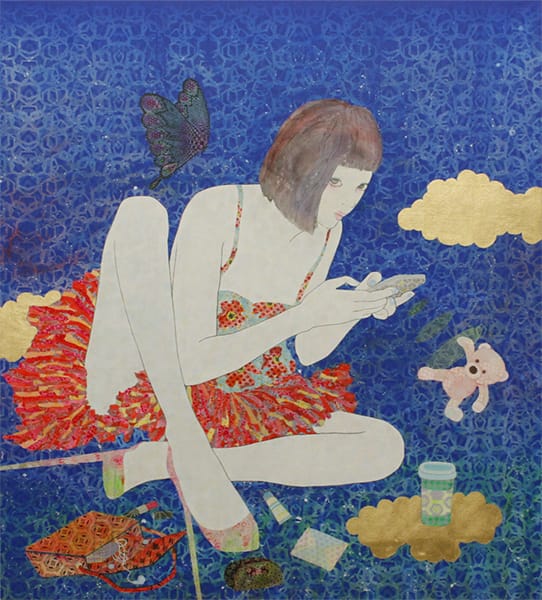Artist Q&A with Kaoruko
Kaoruko’s painting process pays homage to both traditional and contemporary Japanese artistic methodologies by using water-based paint (acrylic), gold leaf, sumi-e (traditional calligraphy techniques), ukiyo-e (traditional Japanese woodblock prints) and silkscreened kimono patterns on canvas. By juxtaposing all these similar yet separate elements, Kaoruko weaves together narratives of the young and old, the bourgeoning and bygone to deliver poignant paintings that straddle cultural, sexual and geographic beliefs and stereotypes of feminine identity at a crucial time that is rewriting the narrative on what it is to be female both here and abroad.

Who is your favorite artist of all time?
Gustav Klimt
How did you become a professional artist?
I was a Japanese pop singer when I was a teenager. Based on my experience of playing the “kawaii (pretty/cute)” character in Japan, I still keep expressing the beauty of women in the art world.
What are the influences and inspirations in your work?
I am currently inspired by the unique Japanese traditional crafts such as “Washi”, traditional Japanese paper, “Aizome”, Japanese indigo dye, and “Arita-yaki”, Japanese porcelain.
How is your work different than everything else out there?
I incorporate the Japanese culture, like Japanese paintings and manga with my works. I use a method of drawing in 2D with a “Mensoufude”, fine pointed brushes and using a 200-year-old kimono pattern into a silk screen to make it look like a collage.
When is a piece finished for you?
When I start drawing my work, my inspiration talks to me. Coincidence calls for the chance. Various colors and ideas are born by that voice. When the conversation stops, I finish the work.


